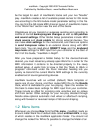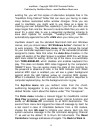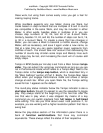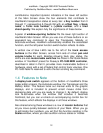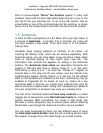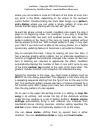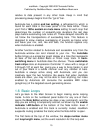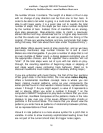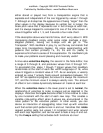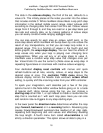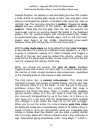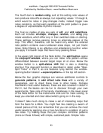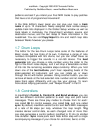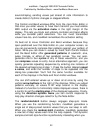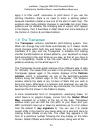maxWerk - Copyright 2000-2007 Amanda Pehlke
Published by RedMoon Music - www.RedMoon-Music.com
16
the
number
of bars it
contains.
The length of a Basic or Drum Loop
with no
change
of play
direction
can be
from
one to four bars. In
order
to be able to tell what is going in a
multi-track
Werk and to be
able to edit loops easily, it is a good idea not to
overdo
the total
number
of steps; that is, the steps per bar
menu
number
multiplied
by the
number
of bars.
Instead,
think of maxWerk as an
analog-
style step
sequencer.
Step-entering
notes to match a previously
stored
midifile motif may
sometimes
call for a
higher
step resolution
so that the results can reflect as well as possible the timing of the
original.
(There
are window
buttons
and key
commands
that make
doing that easy. We'll talk
about
them later
under
"Keyboard
Entry".)
Each
Meter
offers
several levels of step resolution, and as we have
previously
mentioned,
step
number
choices for 6 and 8 count
Meters
are
interchangeable.
If you pick a
number
of steps that is not
an even multiple of
Meter
count, a dialog
appears
reminding
you of
the
appropriate
choices, and the rejected
menu
selection will not
"stick". (If the total steps were out of sync with bar starts on play-
through,
the
resulting
repetition
of
beginning
steps or skipping of
end steps would cause
confusing
track
behavior.
Read on to
discover
maxWerk's
much
better
ways of creatively shifting loops.)
If you are
unfamiliar
with music
theory,
the first of the four sections
of bar
graph
data in the Note Editor, the
nine-value
notes
display
,
offers
a
fundamental
maxWerk
concept.
Here is where you can
begin making musical
patterns,
using as your
components
the
seven pitches
found
in most
western
musical scales,
represented
by
values 1
through
7. As you might expect, a value of 0
represents
a
rest or silence. When you
enter
a
number
0
through
7 on the
computer's
QWERTY key
board
or play back
numbers
that you store
for each bar, maxWerk
transposes
all the
patterns
made
in the note
displays to play over any of the seven
different
triadic
chords
or
positions in the
current
Scale. This
means
that you should view the
patterns
you
enter
here
as
patterns
of
relationship
between
pitches,
not as
representations
of fixed ones.
Value 8 in note
patterns
is a
more
elusive symbol for a pitch that is
variable.
In
order
to allow musically
sophisticated
leading tones that
are not part of the
current
chord
triad, 8’s
trigger
notes
(again,



